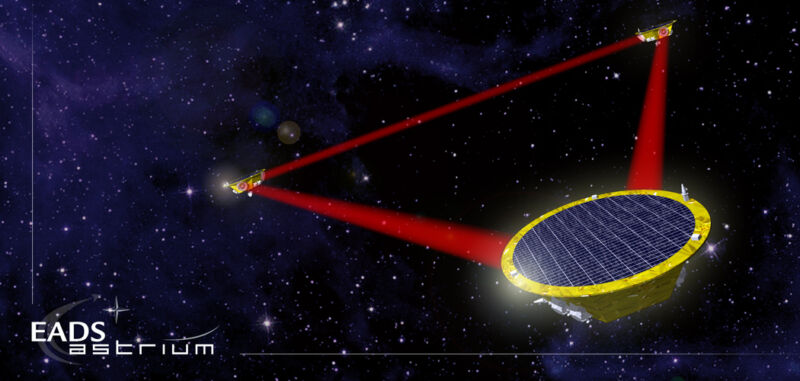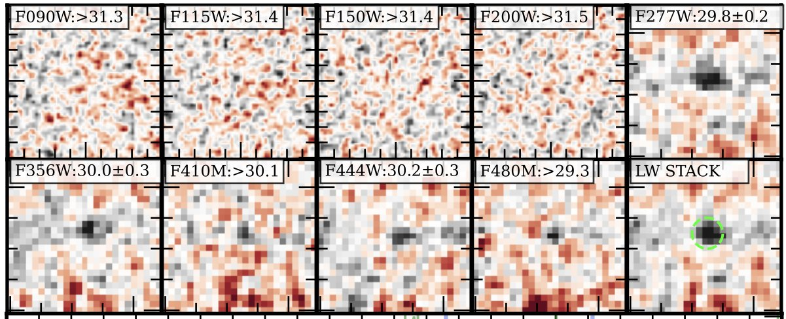
Enlarge / The LISA project will consist of three spacecraft in a triangular configuration, exchanging lasers.
On Thursday, the European Space Agency’s Science Programme Committee gave the go-ahead to the Laser Interferometer Space Antenna, or LISA project. This means the construction of the mission’s three spacecraft could begin as early as a year from now. While the interferometer would follow the same basic principles as the ground-based LIGO (Laser Interferometer Gravitational-Wave Observatory) experiment that first detected gravitational waves, the hardware would be placed 2.5 million kilometers apart, making it sensitive to an entirely new range of astronomical phenomena.
Proven tech
Current gravitational wave detectors use bouncing lasers back and forth between distant mirrors before recombining them to produce an interference pattern. Any change in the position of the mirrors will alter the interference pattern, caused by events such as the rumble of a large truck or the passing of gravitational waves. Having detectors at distant sites helps to eliminate cases of local noise, allowing detection of astronomical events.
The detectors built on Earth have successfully picked up gravitational waves generated by the mergers of compact objects like neutron stars and black holes. However, their relatively compact size means that they can only capture high-frequency gravitational waves produced in the last few seconds before a merger takes place.
To capture more of the process, detecting low-frequency gravitational waves requiring a much larger distance between the interferometer’s mirrors and an escape from the seismic noise of Earth. This necessitates going to space.
The LISA design consists of an outer shell of a spacecraft that absorbs the jostling of the dust and cosmic rays that tear through our Solar System and powers a laser strong enough to reach 2.5 million kilometers. It will also house a telescope to focus incoming laser light, which will spread from its normal tight beam over these distances Floating freely within is a mass that, isolated from the rest of the Universe, should provide a stable platform to pick up any changes in the laser. Three spacecraft trail the Earth in its orbit around the Sun, each sending lasers to two others in a triangular configuration.
That may sound like science fiction, but ESA has already sent a pathfinder mission to space to test the technology. And it performed 20 times better than planned, providing three times the sensitivity needed for LISA to work. So there’s no obvious sticking point.
Going supermassive
Once it gets to space, it should immediately pick up the impending collisions that have resulted in LIGO detections. But it will spot them as much as a full year in advance and allow us to track where the event horizons touch. This would allow us to track the physics of their interactions over time and to potentially point optical telescopes in the right direction ahead of collisions so that we can determine whether any of these events produce radiation.
But that’s only part of the benefit. Due to their far larger size, supermassive black hole mergers are only detectable at lower frequencies, expected to happen following many galaxy mergers, we hope to capture them.
Perhaps the most exciting prospect is that LISA could pick up the early gravitational fluctuations formed in the immediate aftermath of the Big Bang. That has the potential to provide a new view into the earliest history of the Universe, one that’s completely independent of the cosmic microwave background.
Now that I have you all as excited as I am, I regret to inform you that the launch date isn’t planned until 2034. So, hang in there for a decade—I promise it will be worth it.













